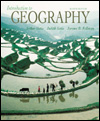Secure a map of your college or university campus. Classify all of the buildings
and facilities into one of the following four categories of primary use (if
a building contains more than one use, assign it the one you think is primary).
Assign each use a color and color each building according to its primary function.
a. Is your campus comprised of functional regions based on groupings of buildings
with similar uses?
______________________________________________________________________________________
b. If so, is there any identifiable spatial pattern based on such characteristics
as age or distance from the centerof the campus? Describe the pattern.
_______________________________________________________________________________________
_______________________________________________________________________________________
_______________________________________________________________________________________
_______________________________________________________________________________________



 2002 McGraw-Hill Higher Education
2002 McGraw-Hill Higher Education

 2002 McGraw-Hill Higher Education
2002 McGraw-Hill Higher Education